Why Are CrossFit Gyms So Expensive?
 Monday, December 22, 2014 at 12:00AM
Monday, December 22, 2014 at 12:00AM 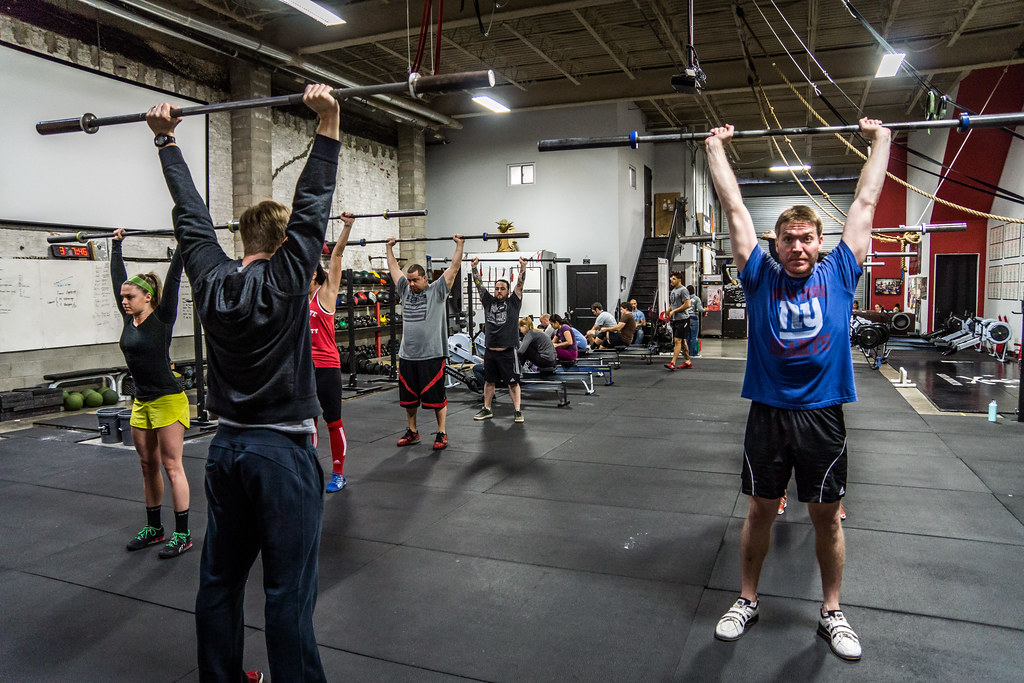
As 2014 has passed and everyone starts planning the 2015 version of themselves, an inevitable first step for many is researching and purchasing a gym membership. Whenever curious friends or family ask me how much my gym costs, their typical response is surprise at our $230* a month price tag. (*This is somewhat higher than typical CrossFit gym membership rates due to inflated NYC real estate costs.) The next question is invariably, "Why are CrossFit gyms so much more expensive than regular gyms?"—which is a valid question if you’re comparing CrossFit affiliates to whatever’s considered standard for a “gym membership.” But the answer to that question requires assessing what you’re actually paying for—and the fact that while there are many similarities (a gym is, after all, mainly just a place where you work out), the range of services and support you get will vary greatly, and may ultimately determine whether you’re back to binge watching New Girl on Netflix instead of showing up to the gym on February 1.
In this article, we’ll discuss how the prices of traditional gyms versus CrossFit affiliates are set in the first place, and evaluate what’s included in any either membership using three straightforward criteria: facilities, training services, and atmosphere. We’ll inevitably have to make some generalizations and of course, I am openly attempting to build the case for the merits of CrossFit gyms, but by answering this question, I hope you’ll be able to better evaluate what’s important to you when choosing a gym and what you’re actually paying for.
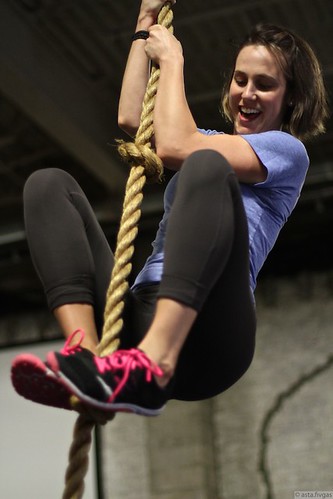 Setting the Price
Setting the Price
Before we get down to assessing what you're paying for, it's important to understand how the prices of any given gym are established. In general, all large commercial gyms (think Bally’s, Equinox, Planet Fitness, etc.) operate on a pre-enrollment membership model, which means that members sign a contract for usually no less than a one-year commitment plus enrollment fees at sign up. This set-up plays to the "rationally minded" consumer making assumptions about their behavior and motivation levels upwards of a year in advance, and allows the gym to assume reliable passive income for the next 12 months, regardless of the activity or success of the member.
We all know the punch line to this joke: An average of 67% of people enrolled don't actually ever show up. NPR's Planet Money recently took a great look at why people pay for gym memberships, but don't use them. If these people did show up, gyms would have to increase their footprints and consequently, the price tag for even the most basic commercial gyms would be far higher. In effect, gyms are able to drastically discount their rates for the handful of people that come to workout. Let me be clear: the typical range of dues from +/- $50-$150 per month you see at these places is NOT an accurate reflection of the income per active member the gym needs to keep its lights on; it's that the silent majority of those who don’t show up subsidizes the memberships of those who do.
This pre-enrollment membership model skews the perception of what it actually costs to run a gym, as its largley based on passive income—which, of course, can work out quite well for everyone who actually shows up. If you’re part of that group, don’t feel you require additional help with a training regimen, and you aren’t worried about getting feedback on your movement, then this is a win/win for you. But from the perspective of a business owner, this is not at all the way I’d want to run my business.
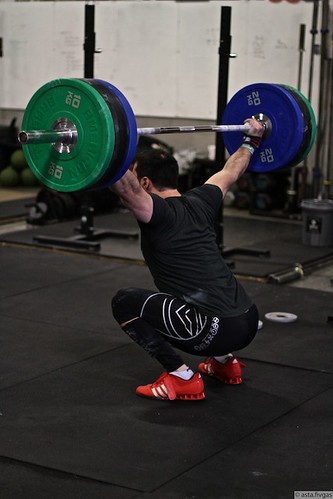 CrossFit affiliates and other specialized instruction-based gyms (SoulCycle, Barry’s Boot Camp etc.) primarily rely on the people who show up to pay their bills. Therefore, these gyms must account for what becomes a much smaller carrying capacity by charging a higher rate and actually delivering an experience that warrants the price tag. These kinds of gyms invariably require more space and equipment per person, as well as a dedicated staff of instructors to make the whole thing work. A significant percentage of people who train at CrossFit affiliates came through our doors because they felt like their traditional gym didn’t give them enough. They would rather pool together with other people for a cost that’s higher than traditional gym dues but less than personal training and that provides directed feedback and support.
CrossFit affiliates and other specialized instruction-based gyms (SoulCycle, Barry’s Boot Camp etc.) primarily rely on the people who show up to pay their bills. Therefore, these gyms must account for what becomes a much smaller carrying capacity by charging a higher rate and actually delivering an experience that warrants the price tag. These kinds of gyms invariably require more space and equipment per person, as well as a dedicated staff of instructors to make the whole thing work. A significant percentage of people who train at CrossFit affiliates came through our doors because they felt like their traditional gym didn’t give them enough. They would rather pool together with other people for a cost that’s higher than traditional gym dues but less than personal training and that provides directed feedback and support.
The economic take-home of this is that if you’re going to base your business on people who actually show up, and you’re going to pay a staff to teach everyone what to do every day, this whole thing is pretty damned expensive to run. As an example, my gym's expenses in 2014 were over a million dollars.
It’s also worth noting that affiliates only pay CrossFit Inc. an flat annual licensing fee ranging from $500-$3000 per year (determined by when you started), which, compared to franchising models, is comically cheap. This is intentional on CrossFit’s part. The idea is that we’re able to reinvest into our families, coaches, and the business itself instead of lining the pockets of CrossFit Headquarters. This benefits consumers, since we get to support the people with which we’re working directly. The benefit for affiliates is that as we grow, we’re able to do crazy things like subsidize health insurance for our employees and pay livable wages. For outsiders to the fitness industry, one might even call this model “progressive.”
Three Points of Criteria
Now that we understand how the prices of gyms are set in general, let’s also assess what you're paying for, which requires asking the right questions. Let’s start by breaking down the three criteria I mentioned in the beginning. This list will help you walk through what is and is not important to you when ponying up the cash to join a gym.
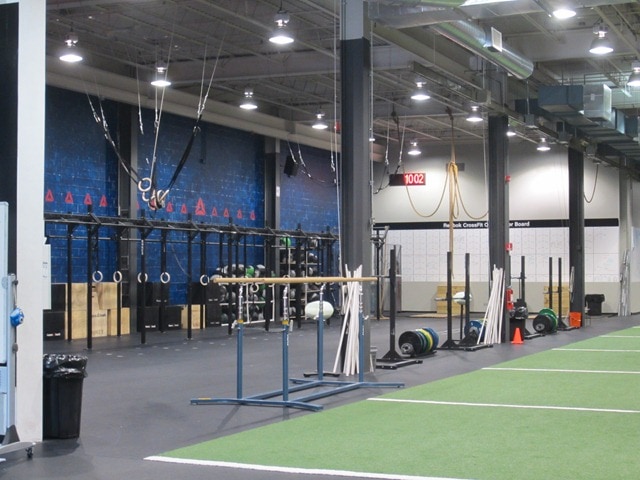 Criteria 1: Facilities and Equipment
Criteria 1: Facilities and Equipment
What's inside the gym? This encompasses everything from the equipment, layout, and amenities like showers, childcare, and parking.
Traditional or Commercial Gyms
Most traditional or commercial gyms are going to have your standard sea of treadmills and cardio equipment, a full set of pin selectorized Nautilus-style machines, and then a smaller portion of the gym reserved for free weights and hopefully a place to stretch out. Often the layout is organized to get as many people running in place as possible since those members don’t require a lot of real estate and the equipment doesn’t require someone to teach you what to do. The goal is to fill the gym with lots of low-skill equipment so people can mostly figure out for themselves how to press the Start button or push the lever away from their chest. That being said, there are exceptions to everything and the place near you might have everything you could ever want to use or do. Based on the chain, there might be additional amenities such as showers, a pool, and childcare, which may play a major factor in your decision.
CrossFit Affiliates
Often the more specialized or serious your training, the more likely you’ll need a gym that caters to those needs. I've known many powerlifters, weightlifters, and CrossFitters who left behind saunas, locker rooms, and eucalyptus-scented hot towels for somewhere that had chalk, quality barbells, and the ability to “drop bumps” (i.e., bailing a barbell). At CrossFit affiliates, we start with the stripped necessities for our strength and conditioning programs, and build out from there. This means we actually have a program that the majority of our membership follows (more on this below), and we emphasize the actual workouts over everything else. Much of our equipment, such as bumper plates and climbing ropes, are simply not found in traditional gyms and we actually encourage you to use and (reasonably!) abuse the equipment.
It’s worth noting that since 2007, I’ve seen a slow but steady increase in standards for facilities and amenities in CrossFit affiliates (take CrossFit Solace in Manhattan, for example), which I see as a positive evolution for market options.
These services include programming tailored for your abilities as well as regular movement education and feedback. Put simply, is anyone telling you what to do and how to do it?
Traditional or Commercial Gyms
As mentioned above, what you get with a traditional gym membership is access to the facilities, and you pay extra for specific programming and movement correction in the form of personal training. (Allow me to point out that gym dues plus a trainer skyrockets the cost to something that would make your CrossFit membership seem like chump change.) If you’re someone who is motivated enough to create an effective training program and monitor your own movement and progress, then a traditional gym might be just fine for you. But one of the major reasons so many people don’t show up in the first place is because they don’t know what to do when they get there.
 Aerobics-style and spinning classes are often a major draw at traditional gyms, which technically qualify as training services. But there are inherent limitations to these classes. Generally speaking, the gym at large or the particular trainer will pick one simple piece of equipment (Bosu balls) or a body part (abs) and then fill 20 to 60 minutes with techno music, cheerleading, and lots of synchronized arm waving and kicking. This may be better than what you’re doing already (e.g, sitting on the couch or strolling on an elliptical machine), and if you enjoy these classes and get what you want out of them, I encourage you to keep going. But consider the difference between exercise and training, which may cause you to evaluate their efficacy.
Aerobics-style and spinning classes are often a major draw at traditional gyms, which technically qualify as training services. But there are inherent limitations to these classes. Generally speaking, the gym at large or the particular trainer will pick one simple piece of equipment (Bosu balls) or a body part (abs) and then fill 20 to 60 minutes with techno music, cheerleading, and lots of synchronized arm waving and kicking. This may be better than what you’re doing already (e.g, sitting on the couch or strolling on an elliptical machine), and if you enjoy these classes and get what you want out of them, I encourage you to keep going. But consider the difference between exercise and training, which may cause you to evaluate their efficacy.
CrossFit Affiliates
At a CrossFit gym, training services—both in regards to programming and movement instruction—are inherent in the cost of membership. A typical gym will generally follow the format of an appropriate warm-up followed by some sort of strength training and finish with a conditioning workout (what you’ve surely heard called a “WOD”). We’ve found that by providing a framework and exercise methodology, people want to show up.
But, as I mentioned above, each CrossFit gym is its own freestanding business, which means that each gym owner can put their own individual stamp on the program of CrossFit—but it also means that the quality and experience of training services will vary from gym to gym. This topic is fodder for another article, but the reality of navigating the entire fitness industry is that you need to be an informed and discerning consumer when it comes to choosing a gym or coach/trainer. While CrossFit has been criticized for quality control, I have yet to see an alternative worldwide fitness movement or chain gym business where all the coaches are considered completely safe, effective, and efficient. There are approximately 10,000 independently owned and operated CrossFit affiliates, and basic probability theory dictates that you’ll come across the normal distribution of quality. Some remarkable and some awful gyms populate the far ends of the spectrum, but the majority fall somewhere in the middle. It’s on you, as the consumer, to shop around and ask the right questions.
 Criteria 3: Atmosphere
Criteria 3: Atmosphere
Last but not least, if you’ve met someone who loves their gym, I can guarantee that love is contingent on a great atmosphere. A gym you're excited to go to with people you enjoy being around will create a wildly more engaging and effective training experience than a gym to which you drag yourself because exercise is something you “should” be doing and that’s where all the treadmills are. While more intangible, the criteria of atmosphere is no less important than the other two and can make or break your experience anywhere.
Unlike traditional gyms, CrossFit gyms are a communitarian fitness experience—meaning that participants interact directly throughout large portions of class, which can and often does lead to meaningful and supportive relationships between people who might otherwise never have met. The social aspect gets people really excited to work out, eat healthy, and—unfortunately for the cousins and various friends of CrossFitters—post incessantly on social media about what they did at the gym that day. From my perspective, there are far worse things a person can spend their time and money on.
Conclusion
So are CrossFit affiliates expensive? Well, the answer is... maybe. It depends on your personal priorities as well as your budget and disposable income. CrossFit affiliates certainly aren't “cheap,” but for so many people across the world, obviously worth it. Take a moment to assess your current situation using the three criteria above and see how your facility stacks up.
Have a happy and healthy 2015, everyone!

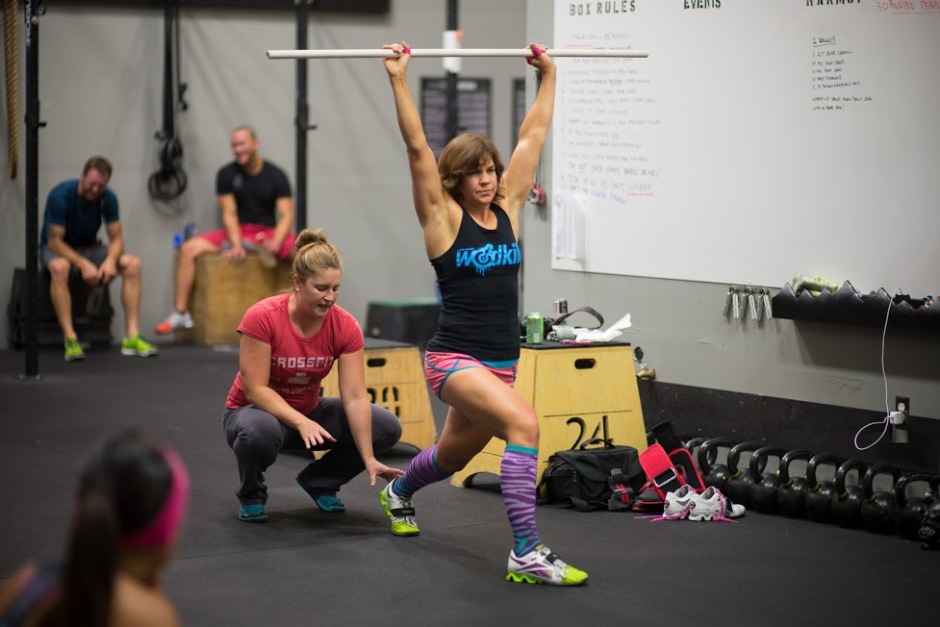
Reader Comments (33)
Great article, thanks!
I just raised our monthly auto pay from $100 to $120. While I believe that is a super good deal and well worth it, some people still cant afford it.
it's a great article... In theory. I joined many CrossFit boxes in the past due to work relocations, and it always took me to go through quite a few of them to find the right fit. I have to agree, there are CrossFit gyms that follow three criteria described above. However, there are some Gyms (if not majority) that are not like the author describes them, and that's what made me think that I wasn't getting for what I was paying. For example the last criteria-atmosphere: there was one box that reminded me of the movie 'the Mean Girls'... Literally, they'd have daily dress codes (like tank top Mondays) and silly gangs of "cool" people. Some of the trainers were busy helping their fellow "cool" athlete rather than fix awfully bad form of a new guy.
I am Not trying to bash Crossfit in general, not at all; I just hope some of the affiliate owners would actually pay attention to ALL three of these criterias.
Thanks for the comments, guys!
@Sam
Yes even "cheap" CF gyms may be outside the budget of folks which is unfortunate but there is certainly a tipping point where the price gets to a point where the gym becomes unsustainable to run. Hopefully we'll see more non-profit style affiliates or programs like steve's club which caters to folks who can't afford affiliate dues. If I COULD charge less, I would.
@Karina
As I mentioned, you need to be an informed and discerning consumer. Your dollars are like votes and where you choose to spend your money makes a difference. If the atmosphere isn't right for you, then you need to look further. My blog and others like it are exactly trying to help affiliates that are starting out and trying to figure out better, more professional ways to run their gyms. We've gotten great feedback from around the world and hope that the quality of gyms continue to improve. Best of luck moving forward and thanks for reading.
For anyone interested there is a longer comments thread on the CrossFit Reddit where I respond to other questions about this article.
http://www.reddit.com/r/crossfit/comments/2rexvh/as_a_box_owner_for_the_past_seven_years_i_discuss/
I clean the gym in exchange for my membership. When I started CrossFit I was unemployed and I feel so very fortunate this was an option (but then again I go to the best box). I'm so hooked now I'll find a way to pay if I can't clean anymore. This only satisfies a few members needs, but that's a few more people! Something slightly unconventional to consider.
I am a member of CrossFit Hell's Kitchen. The owner and head coach is Anthony Preischel, and he and the other trainers are EXCELLENT. I also have worked out at CrossFit South Brooklyn, and David Osorio is excellent as well. I have worked out at other boxes that were great, and others that were not so.
One unfortunate result of affiliate fees (and trainer certifications) being so "comically cheap" is that just about anyone can be a CrossFit trainer and affiliate. As with anything else, it is imperative to shop around and find the quality to justify WHATEVER is being charged.
I view the economics thus: a CrossFit class is semi-private personal training in a hybrid cooperative/competitive environment. If I go just 3 times a week, @ $230 per month I pay less than $18 per training session. Good luck finding that rate in a NYC glob gym. The more often I go, the better the economics become. And by the way, if I DON'T go, my trainer AND my box mates let me hear about it.
In the final analysis: for what it is, CrossFit is not expensive at all.
Forging "elite" fitness -- they tell you right in the name that not everyone can afford it!
Crossfit is expensive for one reason…people continue to pay the ridiculously expensive pricing. It's the same people that pay the ridiculously expensive pricing of Lululemon gear. The last time I checked, I don't need a $60 workout shirt. In the academy we used $10 cotton tshirts and the workouts were 10x as rigorous. But I digress...
When I first started at my old box, it was $99/month for two days a week. That has since gone up to almost $200/month over the course of a few years. Nothing changed during that time: still roughly the same number of classes; the equipment certainly hasn't changed and the workouts are the same movements just in different programing order. Once the initial investment is made in weights, kettle bells, bars, dumb bells the maintenance on this stuff has to be minimal.
A standard "gym" has much more overhead than a Crossfit box and yet it's still cheaper. There is a ton of equipment to maintain, including stuff with electrical components (treadmills, ellipticals, bikes, etc) and staff. Your average box has very low maintenance equipment outside of maybe the Concept 2 rowers and the prices continue to climb. In fact, most boxes even have the nerve to charge extra for "special classes," like Oly lifting, strength training, running, etc, whereas most gyms include their classes.
Another pro to say my 24 Hour Fitness membership is that I've been able to use it all over the country -- for no additional fee. Since all Crossfit boxes are independently owned and operated, membership is non-transferable. That means if you move, relocate for work or are on vacation, you're stuck having to pony up more money (because guaranteed the locked in rate you had is cheaper than a new rate somewhere else) for a new membership or a drop in fee somewhere.
Now don't get me wrong, I'm a fan of Crossfit and in my firefighting world, I think it's one of the most applicable workouts to my career. However, the pricing is nuts and has become cost prohibitive for a lot of people -- but then again, maybe that's the goal.
9 month in, and I believe that this is the cheapest health choice I have made. It is cheaper then planet fitness because I go at minimum 4 x per week and I look forward to going and I have been do it for 9 months. At other gyms I would go for 6 weeks and tail off after that. My money is better spent at CrossFit.
I totally agree with these comments, except, I can't wrap my head around what exactly would justify a box charging 230 a month. My gyms standard is 100 a month, unlimited (6+ Sessions a week) as well as open gym time. Most, if not all of the members at my box are unlimited, and there are around 200 members. Unless the gym is getting top-line bars, bumpers and a shitload of square footage, then I see 230 to be abso-fucking outrageous.
@Dan I hear you, but do you guys live in New York? The cost of living here is exponentially higher than it is in other parts of the country. $230 is actually pretty comparable to many franchise gyms out here, and as the article indicates, it's actually cheaper than many other popular fitness programs in the city. Just compare rent in Manhattan or Brooklyn to rent in a place like Utah, and the difference is clear.
"places like Planet Fitness are not actually designed to accommodate the number of people who enroll as members. For instance, the gym used as an example in this episode of Planet Money had about 6,000 members, and yet the facility itself could only accommodate about 300 people at a time. If all the members who signed up actually went, franchises like that Planet Fitness would have to charge far more than $10 a month. "
http://uproxx.com/webculture/2014/12/how-low-cost-gyms-like-planet-fitness-psychologically-manipulate-people-into-not-going-to-the-gym/
It is truly important to think about what you want out of a gym/box. If you want to workout by yourself on equipment, and plan your own workout then go to a globogym. The reason Crossfit is so popular is it changes every class, you have individualized instruction, and there is a sense of community. I am extremely lucky with the box I picked out. I have a great community and great coaches who have
Helped me through previous back pain and joint problems. They made it possible for me to be active and safe, and compared to the cost of being in pain- it is 100% worth it to me.
I have been doing CF for a long time. I've even owned one. As far as price is concerned, if it prevents you from having to take medication and buying oversize clothing and increases your health, then it's worth it. I do believe there's a point where it's too much but that relative. My gym charges about $100/month and I know others that charge in upwards of $150/month.
Being that I know how to CrossFit and it's out of my price range, I can't imagine paying $200+/month. However, if I had more disposable income and I was unaware of how to become healthier, I think it would be worth the money.
Why crossfit gyms so much expensive? If we are talking about regular gyms it is reasonable compare to others gym.
Great post !
See i would love to join a CF but im living paycheck to paycheck as a college student. Those prices are ridiculous. 230 a month would be $57.50 a week. The gym i go to is $20 a month but thats what i can afford. I could be putting that 57.50 towards tuiton or books. Id love to sign up for it but i just cant see myself working just to pay off a membership.
CrossFit gyms are expensive because to give a quality experience you need fewer members. Most CrossFit gym owners are barely covering costs in many cases. Critics are welcome but at least know the facts. I can send you my gym's business model if you think a CrossFit gym is the path to riches. It's a passion plain and simple. If you want to make money franchise a McDonalds.
Sorry don't buy it minimum outlay maximum profit all this affiliate nonsense is to make it look pricey to set up a warehouse free weights and scaffolding plus add bit of kit cost zip compared to a full gym with swimming pool and all the other gear they have spent out on all of who have to have far more comprehensive insurance than any cross fit gym even the kit needs minimuI maintenance.
I contacted 4 cross fit gyms and asked what formal qualifications their instructors have ,one replied.
Call it what you like it's a form of high intensity circuit training .
IMO it's way over priced for one reason, large profit ,it's certainly not laden with massive overheads as your artical tries to intimate
Interesting to read all the comments here. I was currently dealing with this same issue of should I fork out the big bucks and go to cross fit. I am currently a student (Kinesiology) and can say that you do need to find people who a) know what they are doing and b) appreciate your business. I hummed over going to start Crossfit for a few months as if you had a partner the rate dropped by about $100 (anyone else have a box that does that too?) but alas, people were scared when I said Crossfit! So, I couldn't afford it alone- I actually picked up a second job for a month seasonally to pay for four months and the beginners class of Crossfit. It's about $120 (2x a week now). And $240 for fundamentals classes (6 classes).
Every time I go they know my name, every time I go I get a great workout, everyone is cheering each other on. Brilliant. Additionally, my box knows their stuff- I'm doing a lift and the owner (who also runs some classes) says, "your loosing your form, go a little lower in weight". They also have a rehab clinic attached and make modifications all the time for injuries (eg. I recently broke my toe... And can not run or skip, but damn I can row!!!!)
Anyways- I say ask around your community if your Crossfit gym has a good rep and why... I got many recommendations for my now gym before I signed my savings over ;) it was worth every penny though!!! #Gains